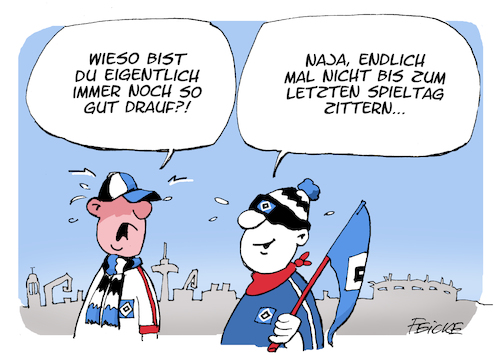Russell's Key Decision: Overcoming Mercedes' Performance Weakness

Table of Contents
Identifying the Core Issues: Diagnosing Mercedes' Problems
Mercedes' struggles in 2023 weren't attributable to a single factor but rather a confluence of issues. The team faced a significant performance weakness stemming from a combination of aerodynamic inefficiencies, car setup complexities, and strategic miscalculations. Let's dissect the core problems:
- Porpoising Issues and Their Impact: The persistent bouncing of the W14, known as porpoising, significantly hampered performance, limiting both speed and driver comfort. This impacted tire wear and overall race pace.
- Lack of Downforce Compared to Competitors: Compared to rivals like Red Bull and Ferrari, the Mercedes W14 lacked crucial downforce, hindering its ability to corner effectively at high speeds. This deficit significantly impacted lap times.
- Tyre Management Struggles: The car's inherent characteristics and setup challenges led to considerable difficulties in managing tire degradation throughout a race, often resulting in compromised performance in the latter stages.
- Strategic Errors During Races: Several races highlighted questionable strategic decisions from the Mercedes pit wall, further compounding the team's difficulties and limiting Russell's potential for better results. These errors included incorrect tire choices and suboptimal pit stop strategies.
Russell's Strategic Approach: Adapting to the Car's Limitations
Faced with a car struggling with inherent performance weakness, Russell's approach was one of calculated pragmatism. He focused on extracting maximum potential from the W14, rather than chasing unrealistic expectations. His strategy revolved around:
- Focus on Consistency and Maximizing Points Finishes: Understanding the limitations of the car, Russell prioritized consistent points finishes over ambitious, risk-laden overtakes. This approach secured valuable points in a challenging season.
- Detailed Data Analysis and Feedback to the Team: Russell meticulously analyzed telemetry data and provided invaluable feedback to the engineers, contributing significantly to incremental improvements in the car's setup and performance.
- Effective Racecraft and Tire Management Techniques: His masterful racecraft and precise tire management helped him mitigate the W14's weaknesses, maximizing its potential and often outperforming the car's raw pace.
- Working Closely with the Engineers for Setup Improvements: Russell's collaborative relationship with the engineers played a crucial role. His feedback, coupled with their data analysis, led to ongoing refinement of the car's setup, yielding marginal but crucial gains in performance throughout the season.
Data-Driven Decisions: Utilizing Telemetry and Engineering Feedback
Russell's approach was heavily reliant on data analysis. The use of telemetry and constant communication with the engineering team was central to his efforts to overcome the Mercedes' performance weakness. His strategy included:
- Use of Onboard Cameras and Sensors: Extensive use of onboard cameras and sensors provided crucial real-time information on car behavior, allowing for immediate adjustments to driving style and feedback to the engineers.
- Detailed Analysis of Lap Times and Performance Data: Through comprehensive analysis of lap times and other performance data, Russell and the team could pinpoint areas for improvement and refine the car's setup with precision.
- Collaboration with Engineers to Optimize Car Setup: A close collaborative relationship with the engineering team ensured that data insights were rapidly translated into tangible improvements in the car's setup and handling.
- Contribution to Future Car Development: The data collected and insights gained throughout the season provided valuable information that will contribute to the development of next year's Mercedes car, aiming to avoid similar performance weaknesses.
Team Collaboration: The Importance of Shared Responsibility
Overcoming Mercedes' struggles wasn't solely Russell's responsibility; it required a collective effort. His role in fostering a collaborative environment was paramount. He actively engaged in:
- Open Communication with Engineers and Mechanics: Open communication channels ensured that issues were identified quickly, and solutions could be implemented efficiently.
- Sharing Insights and Feedback During Race Weekends: Russell actively shared his insights and feedback throughout race weekends, contributing to real-time adjustments and improved race performance.
- Positive Team Morale and Leadership: Russell's positive attitude and leadership played a crucial role in maintaining team morale and ensuring everyone remained focused on finding solutions.
- Promoting a Culture of Continuous Improvement: He actively promoted a culture of continuous improvement, emphasizing the importance of learning from mistakes and constantly striving for better performance.
Conclusion: Overcoming Mercedes' Performance Weakness Through Calculated Strategy
George Russell's response to Mercedes' performance weakness in 2023 serves as a masterclass in strategic adaptation and teamwork. By embracing data-driven decision-making, fostering strong collaboration, and adopting a pragmatic approach to maximize the car's potential, he effectively mitigated the team's struggles. His ability to extract maximum performance from a flawed car highlights the importance of meticulous data analysis, effective communication, and a relentless pursuit of improvement. To conquer Mercedes' performance weakness in the future, and indeed to tackle performance weaknesses in F1 generally, teams must adopt similar strategies emphasizing collaboration and data analysis. What are your thoughts on Russell's approach? Share your strategies for overcoming performance hurdles in the comments below!

Featured Posts
-
 Baile De La Rosa 2025 Analisis De Los Mejores Atuendos
May 25, 2025
Baile De La Rosa 2025 Analisis De Los Mejores Atuendos
May 25, 2025 -
 Nationwide Tennis Participation Surges Over 25 Million Players Projected By August 2024
May 25, 2025
Nationwide Tennis Participation Surges Over 25 Million Players Projected By August 2024
May 25, 2025 -
 Volatiliteit Op Wall Street Aex Toont Veerkracht
May 25, 2025
Volatiliteit Op Wall Street Aex Toont Veerkracht
May 25, 2025 -
 Stock Market Reaction European Shares Gain Lvmh Suffers Losses After Trumps Tariff Comments
May 25, 2025
Stock Market Reaction European Shares Gain Lvmh Suffers Losses After Trumps Tariff Comments
May 25, 2025 -
 Masivne Prepustanie V Nemecku Ktore Firmy Rusia Pracovne Miesta
May 25, 2025
Masivne Prepustanie V Nemecku Ktore Firmy Rusia Pracovne Miesta
May 25, 2025
Latest Posts
-
 Laurent Baffie Thierry Ardisson Et Les Accusations De Sexisme Un Mea Culpa Et Ses Consequences
May 25, 2025
Laurent Baffie Thierry Ardisson Et Les Accusations De Sexisme Un Mea Culpa Et Ses Consequences
May 25, 2025 -
 L Epoque Tout Le Monde En Parle Ardisson Brise Le Silence Apres Baffie
May 25, 2025
L Epoque Tout Le Monde En Parle Ardisson Brise Le Silence Apres Baffie
May 25, 2025 -
 Hsv Aufstieg Zurueck In Der Bundesliga Der Partyrausch In Hamburg
May 25, 2025
Hsv Aufstieg Zurueck In Der Bundesliga Der Partyrausch In Hamburg
May 25, 2025 -
 Thierry Ardisson Se Confie Sur Tout Le Monde En Parle Apres Les Revelations De Laurent Baffie
May 25, 2025
Thierry Ardisson Se Confie Sur Tout Le Monde En Parle Apres Les Revelations De Laurent Baffie
May 25, 2025 -
 Endlich Wieder Bundesliga Der Hsv Feiert Den Aufstieg
May 25, 2025
Endlich Wieder Bundesliga Der Hsv Feiert Den Aufstieg
May 25, 2025
